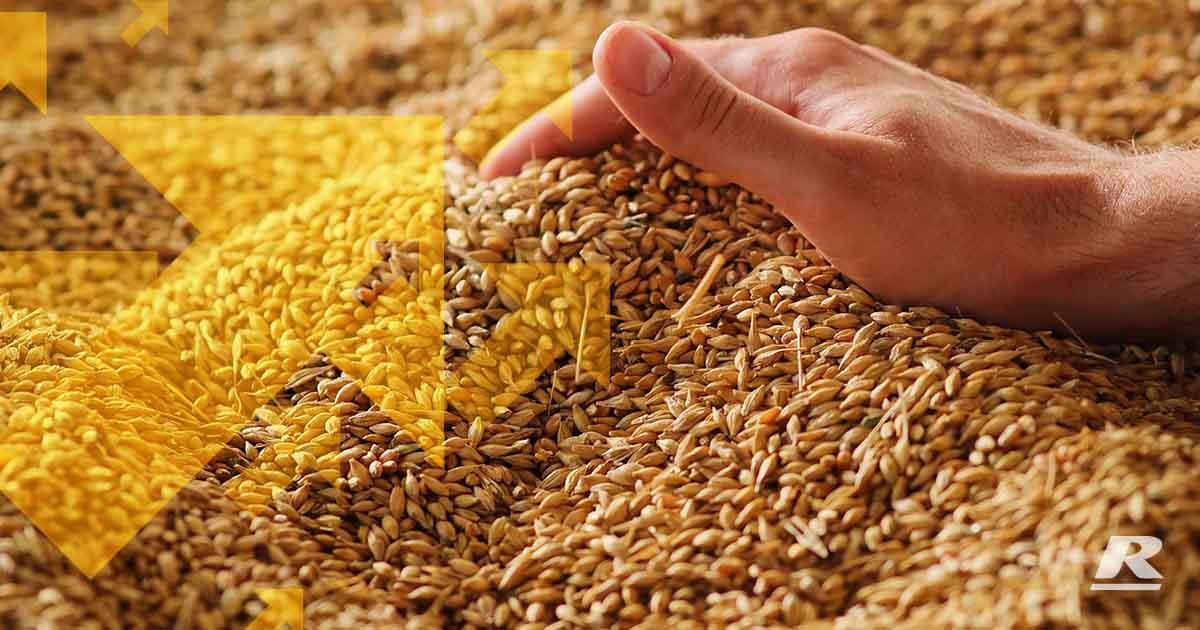COMMODITY UPDATE
Market Observations: July
As Australia passes another Winter solstice, Victorian Farmers were largely hoping for crops to be further along in their development; instead, crops have battled on through a lack of moisture and cold nights. Coupled with a ‘later than ideal’ sowing period, various crops may experience some early yield penalties as a result. Crops in the Southwestern part of Victoria did not see a traditional Autumn break and have only received minimal amounts of rain which as a result put emerging cereals and pulses on the back foot, struggling to emerge with conviction.
Without sufficient rain, the soil lacks the necessary moisture causing a delay in germination or in some cases no germination at all. With the limited amount of rain in the Southwest crusting can form on the surface of the ground making it increasingly difficult for seeds to emerge.
The weather outlook for Victoria in 2024 indicates a trend towards warmer temperatures and variable rainfall patterns. From June to August 2024, Victoria is expected to experience warmer than average temperatures. This trend continues into the September to November period, with most models predicting above-normal temperatures for the region. Rainfall during these periods is expected to be mixed, with the southwestern areas potentially drier and other parts of Victoria seeing neutral to slightly wetter conditions (climate center Ag Victoria). Again, this might be some concern for southwestern cropping areas that have already experienced a slow start to the season. Farmers however have experienced this before and continue to develop the tools to combat such scenarios and mitigate crop failures.
Each year brings another round of new seed technologies to the market, some of those focusing on more drought tolerant traits, essentially requiring less water to germinate and grow. Better machine technologies with the goal of minimising the impact to the soil along with sound rotation practices, just to name a few. Because rains have been late and/or minimal depending on which part of the state is being focused on, the window of which crop to plant closes and a decision might be forced based on which crop still has the chance to succeed outside of a normal rotational structure. Unfortunately, a decision to plant a particular crop based on market expectations and/or projections does not hold as much weight under this scenario.
If we look at the market for old season grain, it is usually the best indicator of what the general sentiment is around next years crop. Farmers have remained buoyant and have been active in most markets across the last month. Old crop stocks continue to present to the market and the market remains relatively strong underpinned by an active export market. For those that have planted and harvested a maize crop this year, yields have been good and providing more impetus to sell cereals as a diversified range of cereals make their way to the market. Maize and Wheat price spreads have tightened as a result. Barley’s relativity to Wheat in terms of price has dropped away after reaching parity levels just a couple of months ago. The export program while still active has slowed slightly seeing Barley trading back to a discounted level from Wheat.
The pulse market remains extremely active driven by demand from both the export and domestic markets. Over the past couple of months supply has remained tight and has meant buyers have had to pay a premium if they were sellers into the forward market. June Canola prices dropped back to the lows seen in late Feb/early March. Since Aug/Sept last year, Canola has been on a relatively steady decline with futures markets dropping by approx. $250p/t across this period.
Forecasts suggest Australia is essentially still on track for a better than average 2024/25 cropping year. The Northern Hemisphere crop (driven by an anticipated high yielding Corn harvest) see’s the global demand for grains satisfied for now. Of course, Australia who plays a big role in the supply of grains to the world, still has many months to go before harvest. Predictably, the market will continue to ebb and flow across this period in line with the prevailing global market conditions.
To increase your livestock farming gains & expert nutritional feeding advice please call 1300 REID FEED or enquire here >
 Author
Author
Justin Fay
Commodity Manager

 Author
Author